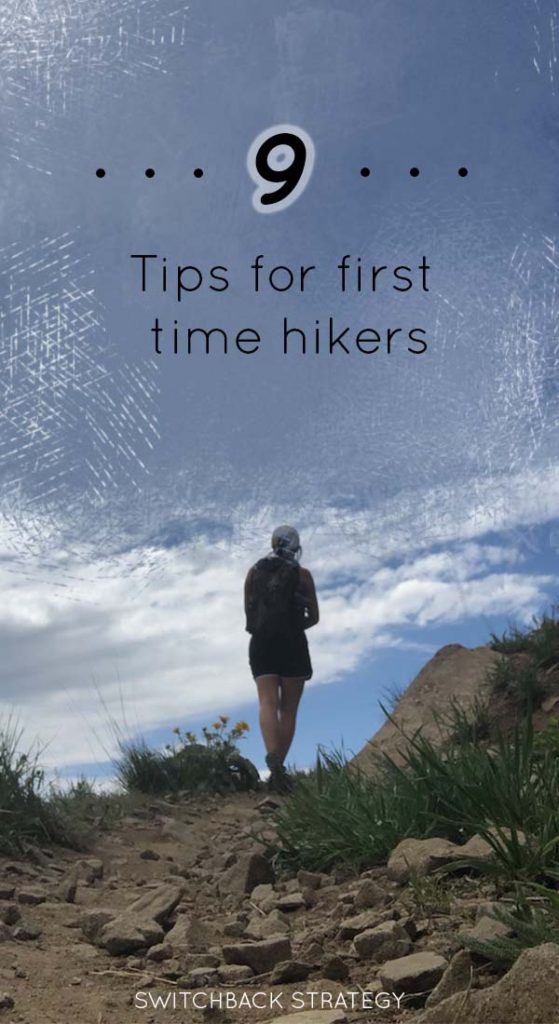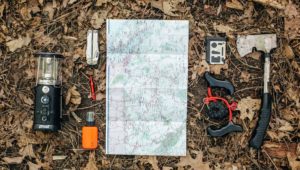The sun is out, the days are getting longer, and it’s a great time to explore the outdoors. But before hitting the trail, make sure you’re prepared with some essential basics.
Hiking is great because it doesn’t require much gear and you can go just about anywhere, but you do want to make sure that your trip is planned out appropriately. So before hiking, make a quick list to checkoff.

Disclosure: This post may contain affiliate links, which means I may receive a small commission, at no cost to you, if you make a purchase through a link on this blog. I would never recommend a product I don’t use or love myself.
Here’s what you’re going to need:
1. A Sense of Adventure
Be open to new and exciting experiences. Being adventurous does not mean being reckless, but rather being willing to accept the unexpected and not to limit your possibilities.
If you’re not feeling particularly adventurous, a sense of humor will do. Make laughter a priority. Focus on the positive points of the day. Stay open and willing to appreciate the experience for what it is.
The more time that you spend outdoors, a sense of adventure will grow. This is because research shows spending time outdoors increases creative problem solving and focus. So get outside, by just being outdoors you will develop the ability to handle unexpected events even better.
2. Good Company
Wanting to explore and to share the adventure with a friend is something I think we all share. Hiking with a friend and sharing an authentic experience can bring you closer together and create lasting memories.
Trek with someone who would dance with you in the rain, because getting caught in the rain while hiking can be a real possibility.
That’s not to say you can’t go at it alone. Most of my hiking lately has been done solo. You can either be good or bad company to yourself. Even if you’re on your own, be good to yourself, keep positivity, motivation, and excitement high.
For safely though, a buddy system is recommended. And at the very least, always inform someone of where you are going.
3. Water
Water is the one resource you absolutely have to have for any trail.
Running out of water equates to having a really bad day, and can be dangerous. So planning out your water supply is essential.
This means paying attention to how much water you have left, having a plan to resupply water, and turning back when you are down to half your water supply.
Make notes of water sources along the way as you go. If there is a water faucet, stream, river, make a mental note of where it is and how far away.
Having a filter can ensure you will be well supplied if you are traveling near a water source. The Sawyer, Lifestraw, and Katadyne are great options.
Stay well hydrated, and pay attention to your body for any signs of dehydration.
4. Map
Getting lost can be scary and confusing. The best way to prevent this is to have a plan and to follow a map so that you keep track of where you are and stay on course.
I sometimes promote embracing getting lost as part of the adventure, and it can be. But having been there, the reality is that you are going to feel more confident if you know where you are.
Do a quick planning session before you go, I often use alltrails.
There are lots of different types of maps: google maps, topographical maps, physical maps, road maps, resource maps. I recommend physical maps for well tracked popular trails that are known as being well marked, and topographical maps for more complex trail planning. Topographical maps have more information, but there is a learning curve to using them. If there is a map at the trailhead, take a picture with your phone. I find it much easier to follow the trail with that enlarged photo, and only have to get out my map if I really get offtrack.
5. Quality Socks
Your feet need to stay warm, dry, and blister free. So, while you don’t need much gear to hike, you want good socks and shoes.
Cotton socks for daily use aren’t designed for hiking long distances. They don’t wick moisture or insulate well and the extra friction will likely give you blisters. As feet sweat, you want a material that isn’t going to hold on to the moisture.
Invest in hiking socks, moisture-wicking socks made of synthetic fibers or merino wool.
There are lots of options: material choices, height of the cuff, padding. I think a good basic sock with a fairly low price point to get started is the lightweight Smartwool PhD Outdoor Sock (men or women) or the REI Co-op Merino Wool Sock (men or women)
Don’t skimp here, use good socks!
6. Comfortable Shoes
The most important thing about shoes is that they are comfortable.
Finding good shoes requires that you try them on to feel what fits your feet the best. And then breaking them in gradually so that they aren’t stiff and rub blisters.
If you buy the best rated and most expensive hiking boot on the market, it won’t do you any good if it doesn’t fit your foot and you haven’t broken them in. You will just end up in pain.
Do I need hiking boots?
No, running shoes are fine for most day hikes. Trail running shoes have better traction and padding.
However, if you are going backpacking or are prone to injury (weak ankles), then hiking boots are worth considering.
The great thing about hiking is that you don’t need much gear to get started. There are some basics that you do want to set up well though (like socks and shoes), and you will have a more positive experience.
7. Sun Protection
Being outdoors exposes your skin to ultraviolet rays from the sun, even on cloudy days. You need to protect your skin from long exposures.
A hat, sunglasses, and sunblock will keep you protected. While you may not notice it during the hike, you will be grateful that you protected your skin later. If you don’t adequately protect your skin, you will get sunburn.
I am not a sunblock expert, but in terms of SPF I get anything from 30-50, usually the sports one because it tends to stay on longer. I typically buy whatever is on sale. And the difference I have noticed is in how often I have to reapply it.
8. Snacks
I LOVE SNACKS! The rest of this list is more important, but this is the part I get the most excited about.
Calories are energy, so if you are expending calories you need to replace them. If you are going for a short trip (less than 2 hours) then you could eat a meal beforehand and probably be ok. Anything longer and you want to have something with you.
I love snacks so much that I wrote an entire list of them.
Some good snacks are: nuts, fruit, energy bars.
Give yourself a treat for all your hard work.
9. Complete Hiking Checklist
Being prepared is important. This is a fun list of things to get started on a short, well populated and well-marked trail, but it is in no way comprehensive. Especially if your next trip is a long hike, look at this checklist to make sure that you are well prepared. It includes things like emergency supplies, insulation, shelters, fire starter, repair kits, binoculars, hand saw, and illumination that should be considered if you will be on a long excursion without easy access to resources.
Hiking is really just walking. While hiking can range in difficulty, it doesn’t have to be strenuous and can be done by almost anyone. Planning will help your day go smoother. How long and steep is the trail? What will the weather be that day? Are there public restrooms? Are dogs allowed? The length of the hike, elevation change, and weather will dictate what you need to bring and how much planning will be involved. Within a little time, you can be well prepared for any trip. It really is a beautiful world to explore.
So, what are you waiting for? Get out there.



